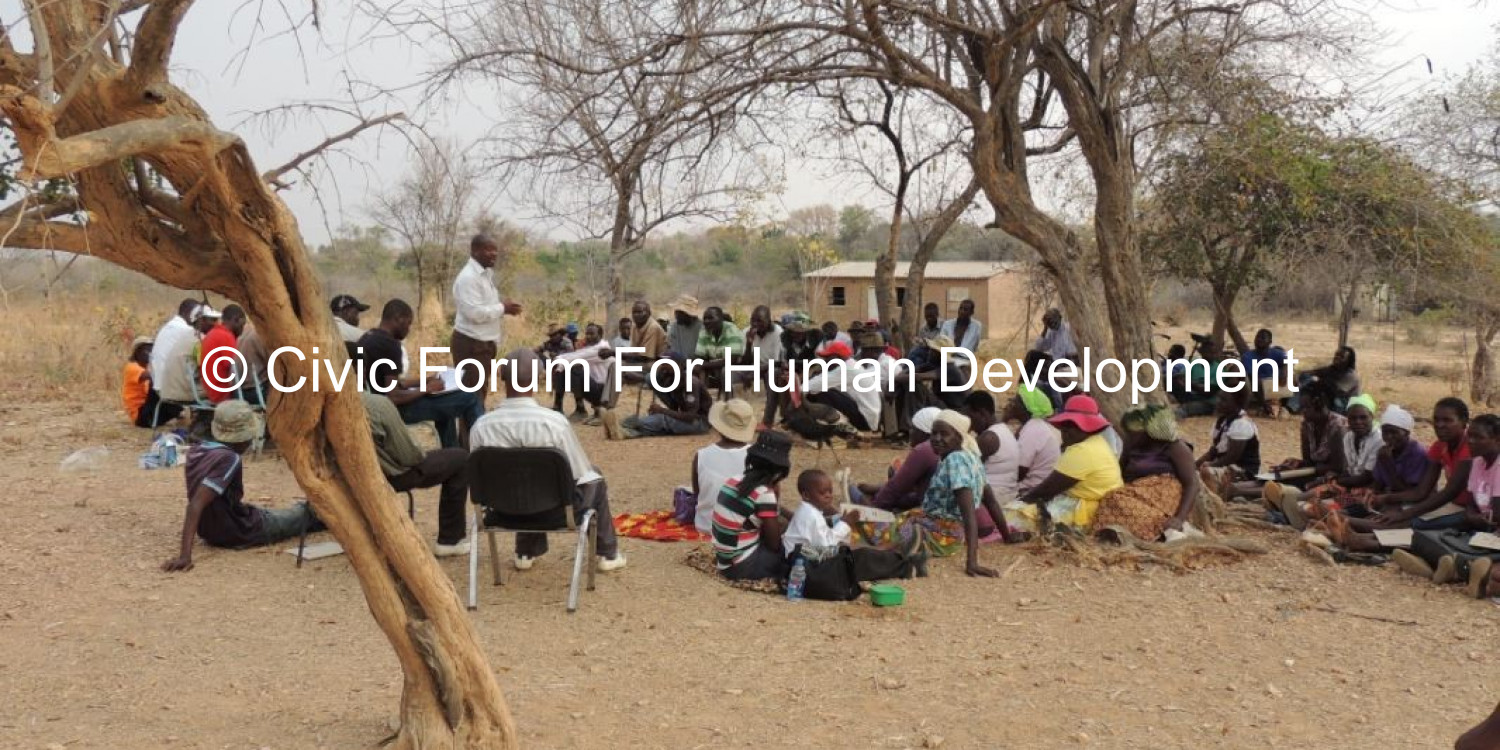
Peace Building Project
The CFHD in partnership with the ARDC and the CCDS implemented a USAID funded project titled Promoting Peace Building for Sustainable Development in rural areas of Zimbabwe during the period February 2013 to May 2016. The project was implemented in the four provinces of Mashonaland East (Mutoko), Mashonaland West (Nyaminyami), Manicaland (Chipinge) and Matebeleland North (Tsholotsho). The four districts reflect diversities in the main native languages (Ndebele, Tonga, Shona and Ndau) and they all sought to promote peace for sustainable development in their respective areas. The approach of the project was appropriate at bridging different political positions within citizens’ differences between civil society and local government. The project was aimed at empowering local leaders and district and sub-district structures to drive the processes of peace building, conflict mitigation and reconciliation as the basis for promoting and share democratic values in society that leads to inclusive participation and sustainable rural development.
A map of Zimbabwe depicting the four provinces targeted by the project
Project Objectives
• The overall objective of the project was to create a conducive environment for peace building and reconciliation initiatives to promote sustainable development in rural areas of Zimbabwe.
• The specific objective was to increase local leaders, district and sub-district structures knowledge on peace building, conflict mitigation and reconciliation as the basis for promoting and internalization of democratic values and principles.
Operational Strategy and Methodology |
Light touch facilitation model
The model enabled empowerment of local actors to drive the whole planning, implementation and capacity building process of the project at district and sub-district level under the mentorship of the CFHD. The model facilitated for the establishment of DATs in each of the targeted 4 districts comprising of 15 members drawn from local government members of staff and representatives of government departments resident at district level and representatives from local CBOs.
Capacity building initiatives
The project heavily relied on trainings because one of its aim was to transform the human mind set which is critical for positive behavioural change to begin to tolerate divergent political views, accept multi-partyism and democratic processes, respect the right of freedom of expression and association. Local actors were targeted for capacity building to enable them to drive the project process and this included; DAT, traditional leaders, political leaders, peace ambassadors/ward facilitators and paralegals on the principles of peace building, conflict mitigation and reconciliation.
Peace Building and Income Generation Groups
The project used local economic development initiatives as a tool to encourage and promote the participation of women, youths, the elderly and other marginalised groups. Political violence and other social deterrents have been major obstacles for marginalised groups to participate in peace building processes which have been labelled as a domain for the physically strong. The project supported the establishment of 12 peace building and income generation groups whose aim was to promote collaboration and changing mind-set of group members. The initiative sought to build an understanding and appreciation of group dynamics and conflict management of people from different political backgrounds whilst they are working towards improving their livelihoods.
Peace Charters
The project facilitated the development of 94 ward based peace charters which are sets of norms and rules agreed by a given community in relation to maintaining peace, harmony and tranquillity. Peace charters were used as basic tools in the community raising awareness processes by the paralegals and peace ambassadors working with traditional leaders, councillors and local authority officials.
Support framework for Pilot Local Authorities
The four RDCs that participated in the project were selected from the RDCs that were supported from an EU funded project titled Strengthening Local Governance and Citizen Participation (2010-2015).
This section highlights the main activities that have been implemented by the project as it endeavoured to fulfil its key results and objectives.
Training of DAT members and local leaders on conflict mitigation, reconciliation and peace building |
The project facilitated the establishment of 4 DATs in each of the targeted 4 districts comprising of council staff, representatives from Government departments/Ministries that are resident in the targeted districts. Each DAT comprised of 15 members and paved the way for the implementation of the project light touch facilitation model which empowered local technocrats to drive the project processes at district level under the mentorship of the CFHD technical team. The model enabled the project to smoothly cover all the 4 districts and 94 wards without constraining financial and human resources. It also enabled the project to cover some of the hot politically contested districts such as Chipinge through the use of local facilitators. Positive impact that emerged through the implementation of the light touch model includes:
- Improved collaboration and engagement between the local council and various Government departments and Ministries resident at district level.
- Establishment of local resource persons in peace building and conflict management who will continue to provide support to local communities and local leaders beyond the lifespan of the project.
- Adoption of the DAT concept by the Mutoko RDC as a best practice model for use in engaging with other development partners working in the district.
- The DATs in the project four districts demonstrated a high level of understanding of peace building and conflict management concepts. This was evidenced by their ability to confidently articulate these concepts and impart knowledge to sub-district levels.
- Activities on the light touch model directly fitted into one of USG CMM indicators on the number of new groups or initiatives created through USG funding dedicated to resolving the conflict or the drivers of the conflict.
Traditional leaders and their respective committees (VIDCOs and WADCOs) were trained in peace building and conflict management by the DAT under the mentorship of the CFHD technical team. The trainings were conducted to internalize the norms, values and principles of conflict mitigation, peace building and reconciliation by the local leadership. Training the local leadership also enabled the project to secure buy-in from the communities.
Powered by Froala Editor